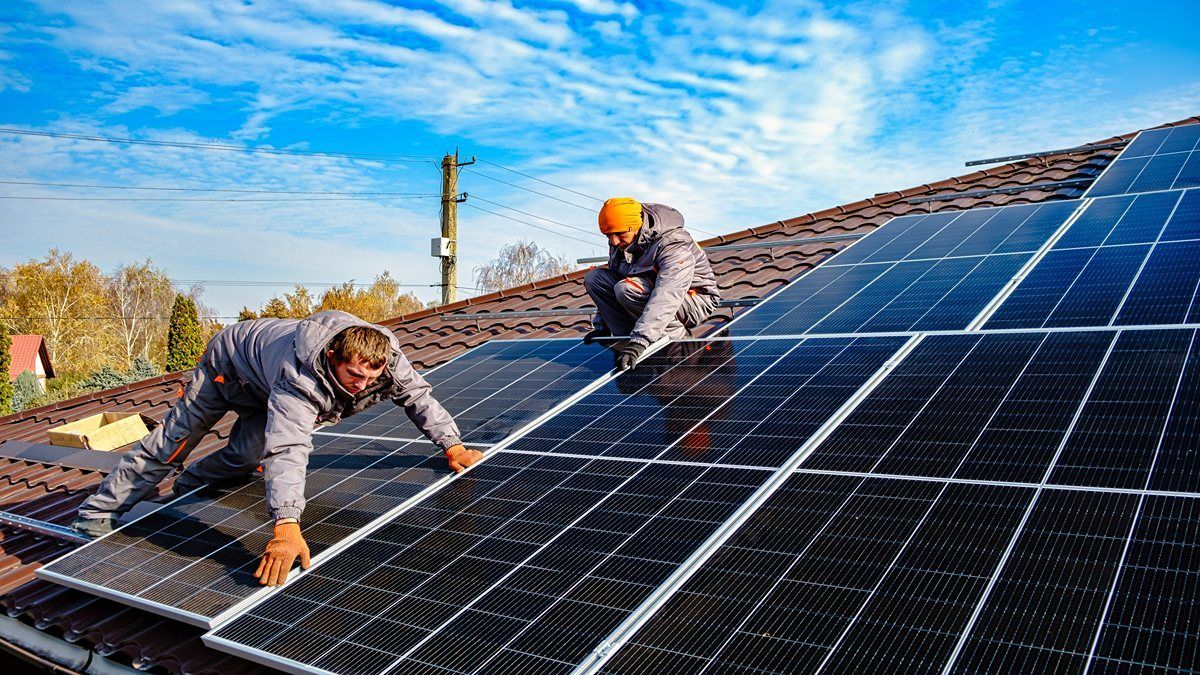Solar panels are an increasingly popular way to generate clean, renewable energy for homes, businesses, and communities. Understanding how they work, their benefits, types, installation process, and potential drawbacks can help you make an informed decision about adopting solar technology. Here’s a comprehensive guide on everything you need to know about solar panels.
How Solar Panels Work
Solar panels, also known as photovoltaic (PV) panels, convert sunlight into electricity through the photovoltaic effect. Here’s a simplified breakdown of the process:
-
Photovoltaic Cells: Each solar panel consists of many small units called photovoltaic cells, typically made from silicon. These cells absorb sunlight, causing electrons to become energized and generate a direct current (DC).
-
Inverter: The DC electricity generated by the solar panels is converted into alternating current (AC) by an inverter. AC is the form of electricity used by most household appliances and the electrical grid.
-
Electricity Distribution: The converted electricity can be used to power your home, stored in batteries for later use, or fed back into the electrical grid, often resulting in credits or payments from your utility company.
Benefits of Solar Panels
-
Renewable Energy Source: Solar energy is abundant and renewable, reducing reliance on fossil fuels and decreasing greenhouse gas emissions.
-
Cost Savings: While the initial investment can be significant, solar panels can lower or eliminate your electricity bills over time. Many governments offer incentives, rebates, and tax credits to offset installation costs.
-
Energy Independence: Generating your own electricity reduces dependence on the grid and protects against rising energy costs and power outages.
-
Low Maintenance: Solar panels require minimal maintenance, typically only needing occasional cleaning and regular inspections to ensure optimal performance.
-
Increase Property Value: Homes equipped with solar panels often have higher property values and appeal to eco-conscious buyers.
Types of Solar Panels
-
Monocrystalline Solar Panels:
- Efficiency: High
- Appearance: Uniform black color
- Cost: Higher
- Lifespan: 25+ years
- Ideal For: Small roof spaces due to their high efficiency and power output.
-
Polycrystalline Solar Panels:
- Efficiency: Moderate
- Appearance: Bluish hue with speckled look
- Cost: Lower
- Lifespan: 20-25 years
- Ideal For: Larger roof spaces where the slightly lower efficiency can be compensated by installing more panels.
-
Thin-Film Solar Panels:
- Efficiency: Lower
- Appearance: Flexible and lightweight, often black or dark blue
- Cost: Varies
- Lifespan: 10-20 years
- Ideal For: Diverse applications including curved surfaces and portable setups due to their flexibility and lightweight nature.
Installation Process
-
Assessment and Planning:
- Site Evaluation: A professional will assess your property’s solar potential, considering factors like roof orientation, shading, and structural integrity.
- System Design: Based on the evaluation, a customized solar system is designed to meet your energy needs and budget.
-
Permits and Approvals:
- Local Regulations: Obtain necessary permits and approvals from local authorities and your utility company.
- Incentives: Apply for any available incentives, rebates, or tax credits.
-
Installation:
- Mounting the Panels: Solar panels are mounted on your roof or ground using racking systems.
- Electrical Connections: The panels are wired to the inverter, and the inverter is connected to your home’s electrical system.
- Inspection and Activation: After installation, the system is inspected for safety and compliance, and then it’s activated to start generating electricity.
Potential Drawbacks
-
Initial Cost: The upfront cost of purchasing and installing solar panels can be high, although this can be mitigated by incentives and financing options.
-
Weather Dependence: Solar panels generate less electricity on cloudy days and none at night, although battery storage can help mitigate this issue.
-
Space Requirements: To generate significant power, a considerable amount of roof space or land is needed, which may not be feasible for all properties.
-
Aesthetic Concerns: Some people find the appearance of solar panels unattractive, although modern designs are becoming more aesthetically pleasing.
-
Maintenance and Repairs: While minimal, solar panels do require occasional cleaning and may need repairs if damaged by severe weather or debris.












